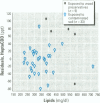Abstract
The objective of this study was to investigate a broad range of adverse health outcomes and their potential association to wood preservative used in daycare centers. This article focuses on reproductive effects. A sample of 221 exposed teachers was provided by the employer's liability insurers. A comparison group (n = 189) insured by the same two organizations was recruited from nonexposed daycare centers. In a face-to-face interview, job history and reproductive history of 398 female teachers were ascertained. Data on exposure were provided, including measurements on concentration of pentachlorophenol (PCP) and lindane in wood panels, and of PCP, lindane, polychlorinated dibenzo-p-dioxins and dibenzofurans in indoor air. An exposure matrix based on individual job history, independent exposure information from each center, and reproductive history was set up with regard to the vulnerable time windows for each pregnancy. Using this approach, 49 exposed and 507 nonexposed pregnancies were identified, including 32 exposed and 386 nonexposed live births. For subgroup analyses the observations were restricted to independent pregnancies, excluding multiple and consecutive births. The data were analyzed with linear regression techniques, taking confounders into account. The crude median difference between exposed and nonexposed was 175 g in birthweight and 2 cm in length. Controlling for confounders, the results show a significantly reduced but weight (p = 0.04) and length (p = 0.02) in exposed pregnancies, even after restricting the data to independent pregnancies and pregnancies for which data could be validated from the mother's health cards. These differences were not explained by differences in gestational age indicating that a toxic effect, which could cause small-for date newborns, might have affected the fetus.
Full text
PDF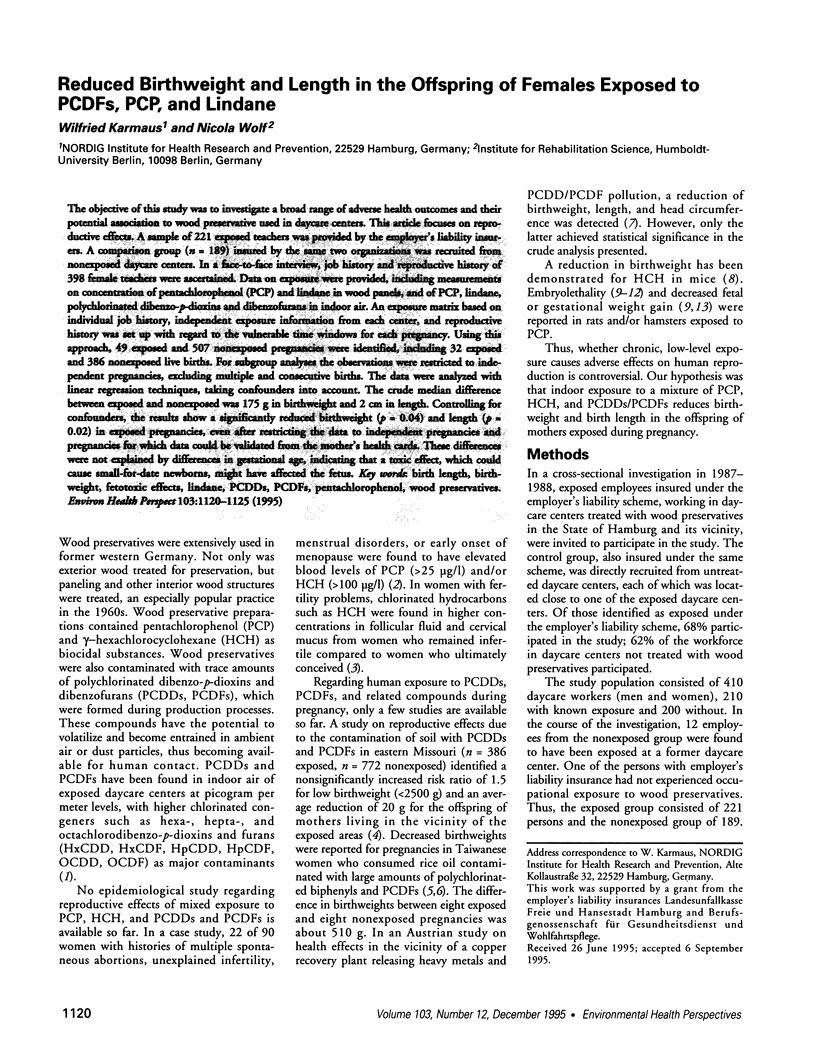
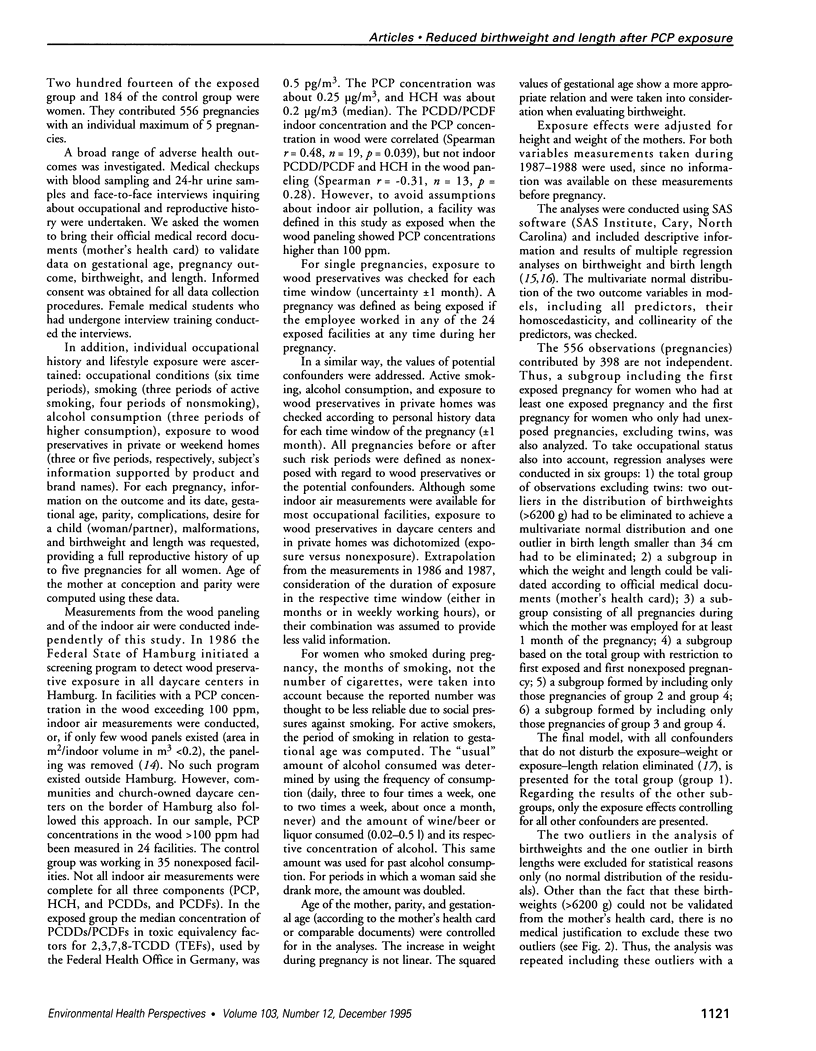
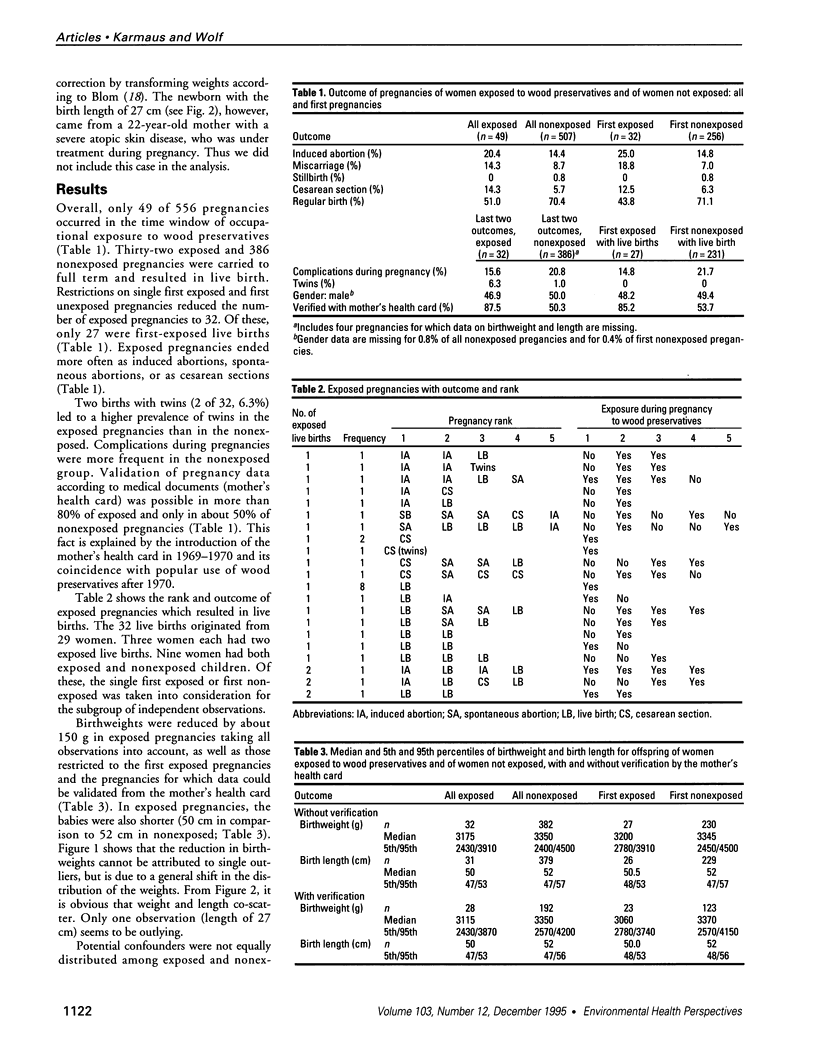
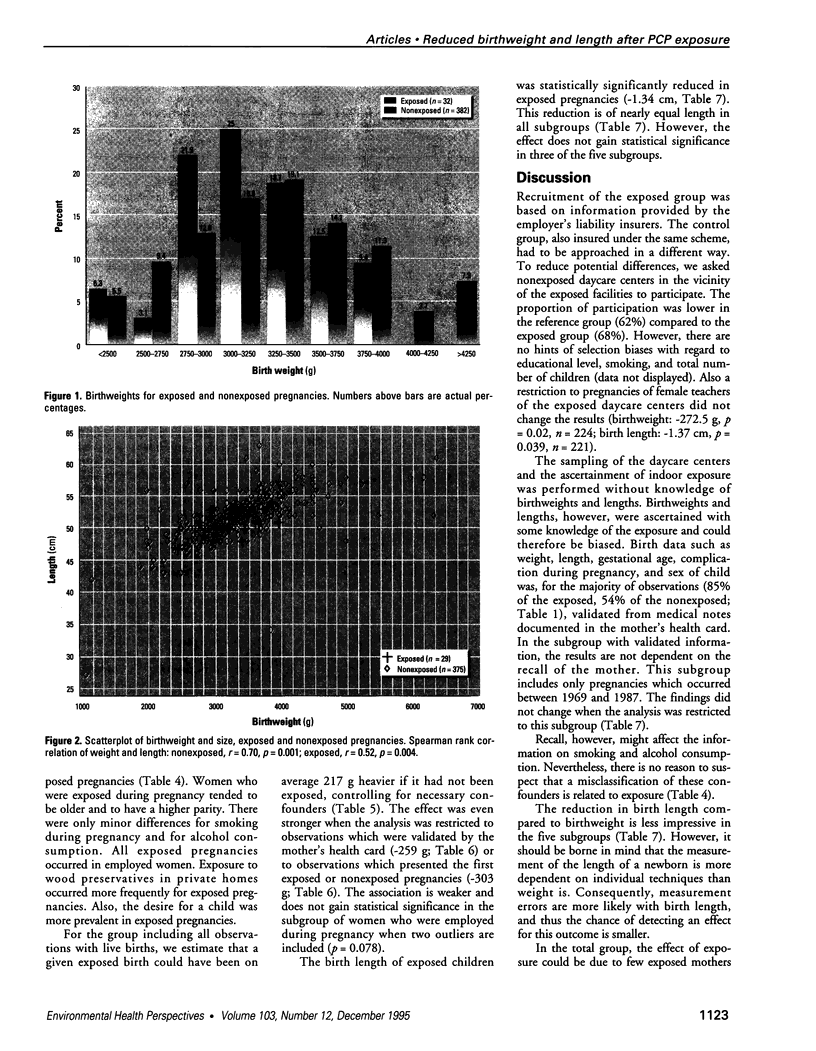
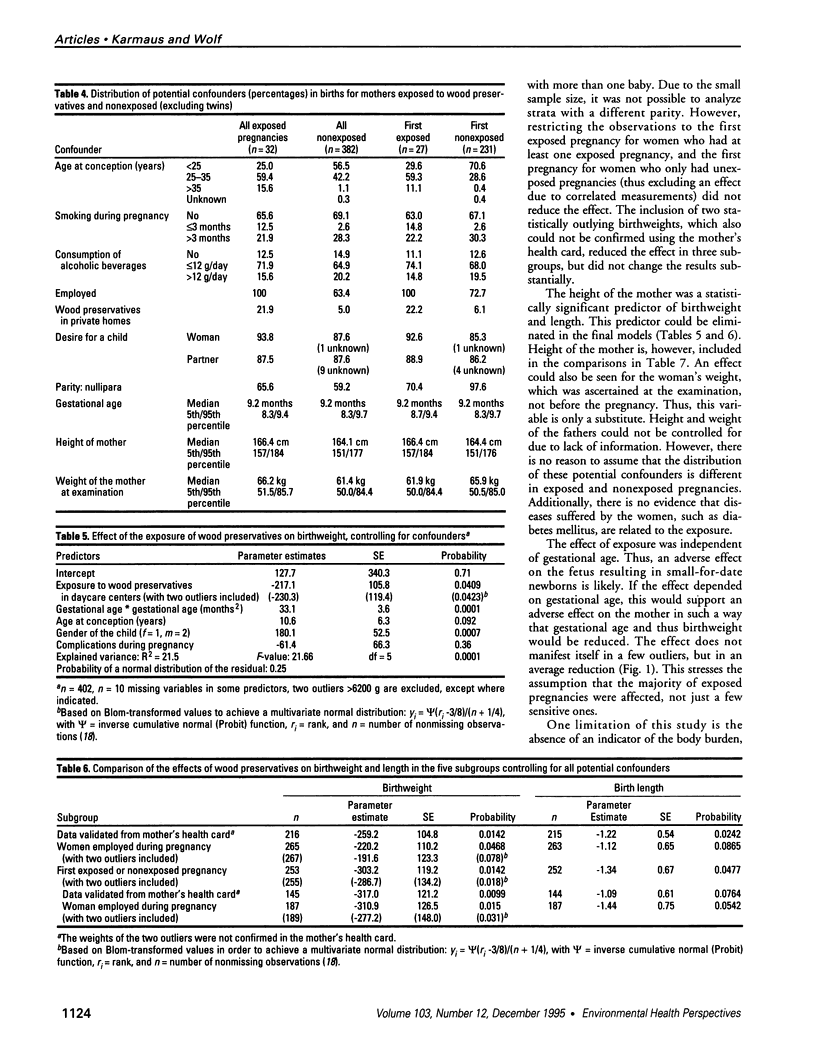
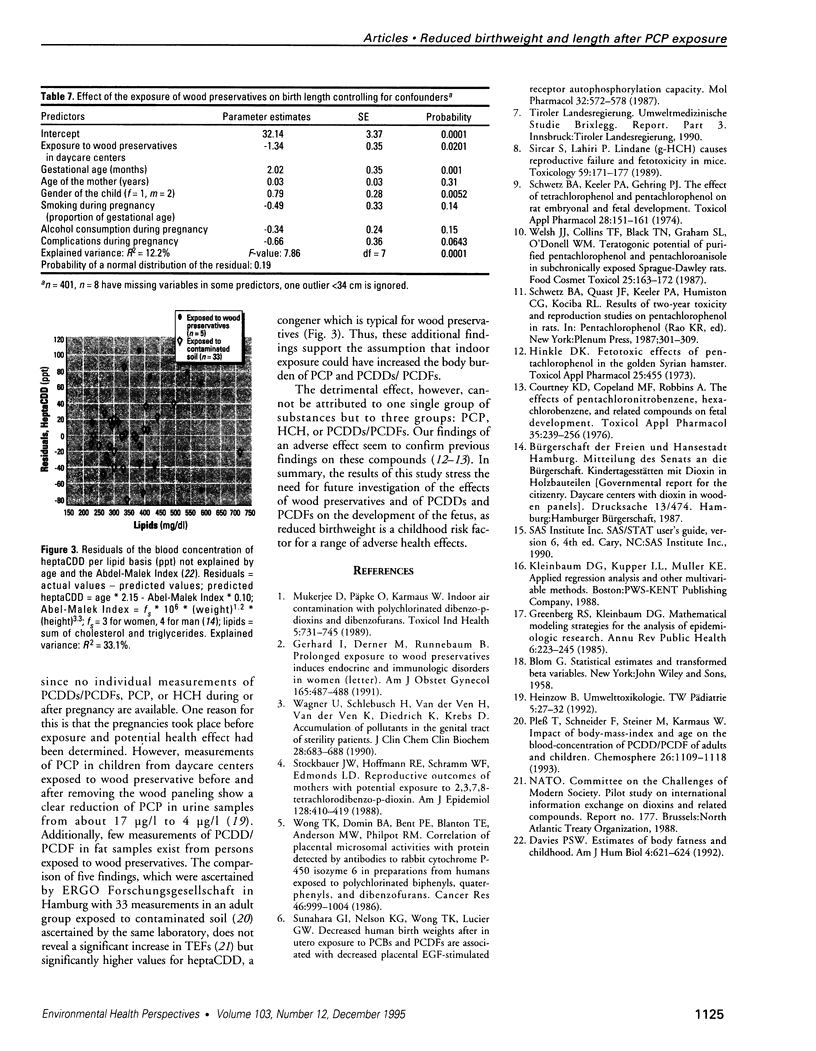
Images in this article
Selected References
These references are in PubMed. This may not be the complete list of references from this article.
- Courtney K. D., Copeland M. F., Robbins A. The effects of pentachloronitrobenzene, hexachlorobenzene, and related compounds on fetal development. Toxicol Appl Pharmacol. 1976 Feb;35(2):239–256. doi: 10.1016/0041-008x(76)90285-4. [DOI] [PubMed] [Google Scholar]
- Gerhard I., Derner M., Runnebaum B. Prolonged exposure to wood preservatives induces endocrine and immunologic disorders in women. Am J Obstet Gynecol. 1991 Aug;165(2):487–488. doi: 10.1016/0002-9378(91)90131-a. [DOI] [PubMed] [Google Scholar]
- Greenberg R. S., Kleinbaum D. G. Mathematical modeling strategies for the analysis of epidemiologic research. Annu Rev Public Health. 1985;6:223–245. doi: 10.1146/annurev.pu.06.050185.001255. [DOI] [PubMed] [Google Scholar]
- Mukerjee D., Päpke O., Karmaus W. Indoor air contamination with polychlorinated dibenzo-p-dioxins and dibenzofurans. Toxicol Ind Health. 1989 Oct;5(5):731–745. doi: 10.1177/074823378900500511. [DOI] [PubMed] [Google Scholar]
- Schwetz B. A., Keeler P. A., Gehring P. J. The effect of purified and commercial grade pentachlorophenol on rat embryonal and fetal development. Toxicol Appl Pharmacol. 1974 Apr;28(1):151–161. doi: 10.1016/0041-008x(74)90141-0. [DOI] [PubMed] [Google Scholar]
- Sircar S., Lahiri P. Lindane (gamma-HCH) causes reproductive failure and fetotoxicity in mice. Toxicology. 1989 Dec 1;59(2):171–177. doi: 10.1016/0300-483x(89)90055-3. [DOI] [PubMed] [Google Scholar]
- Stockbauer J. W., Hoffman R. E., Schramm W. F., Edmonds L. D. Reproductive outcomes of mothers with potential exposure to 2,3,7,8-tetrachlorodibenzo-p-dioxin. Am J Epidemiol. 1988 Aug;128(2):410–419. doi: 10.1093/oxfordjournals.aje.a114981. [DOI] [PubMed] [Google Scholar]
- Sunahara G. I., Nelson K. G., Wong T. K., Lucier G. W. Decreased human birth weights after in utero exposure to PCBs and PCDFs are associated with decreased placental EGF-stimulated receptor autophosphorylation capacity. Mol Pharmacol. 1987 Nov;32(5):572–578. [PubMed] [Google Scholar]
- Wagner U., Schlebusch H., van der Ven H., van der Ven K., Diedrich K., Krebs D. Accumulation of pollutants in the genital tract of sterility patients. J Clin Chem Clin Biochem. 1990 Oct;28(10):683–688. [PubMed] [Google Scholar]
- Welsh J. J., Collins T. F., Black T. N., Graham S. L., O'Donnell M. W., Jr Teratogenic potential of purified pentachlorophenol and pentachloroanisole in subchronically exposed Sprague-Dawley rats. Food Chem Toxicol. 1987 Feb;25(2):163–172. doi: 10.1016/0278-6915(87)90150-5. [DOI] [PubMed] [Google Scholar]
- Wong T. K., Domin B. A., Bent P. E., Blanton T. E., Anderson M. W., Philpot R. M. Correlation of placental microsomal activities with protein detected by antibodies to rabbit cytochrome P-450 isozyme 6 in preparations from humans exposed to polychlorinated biphenyls, quaterphenyls, and dibenzofurans. Cancer Res. 1986 Feb;46(2):999–1004. [PubMed] [Google Scholar]





